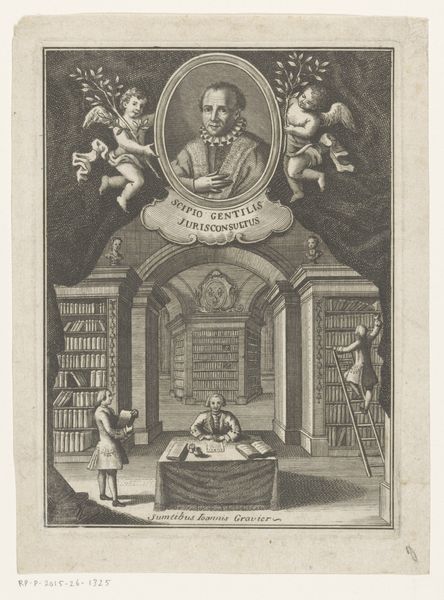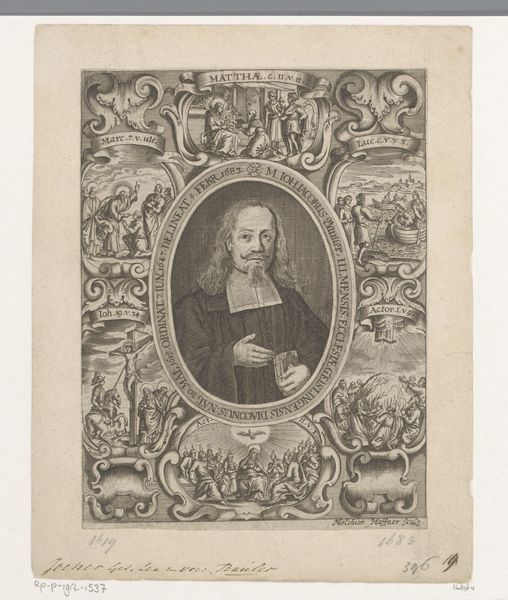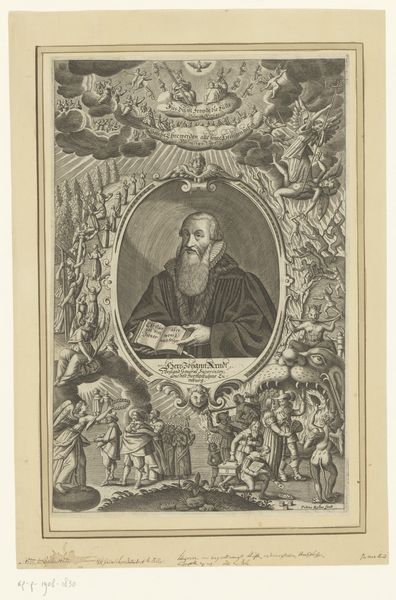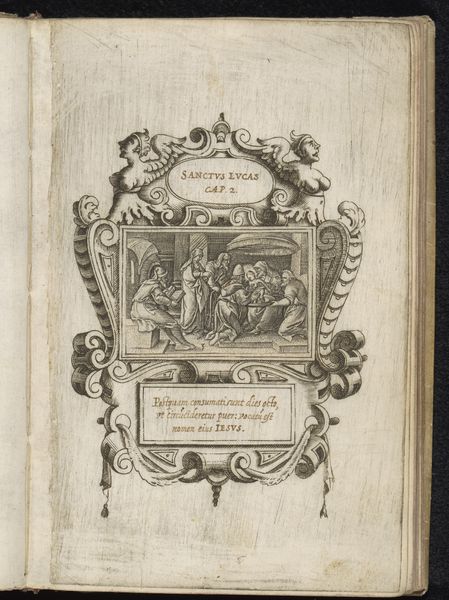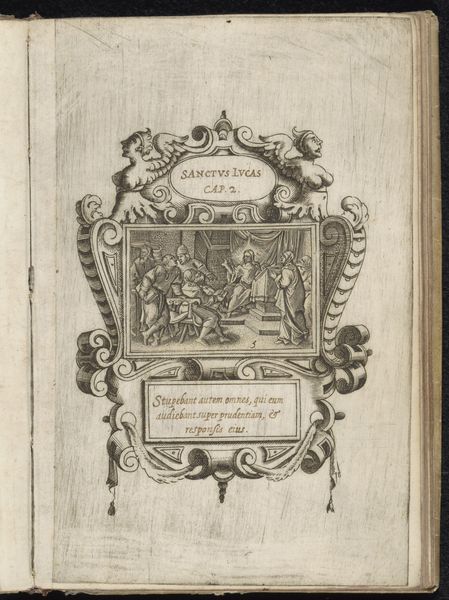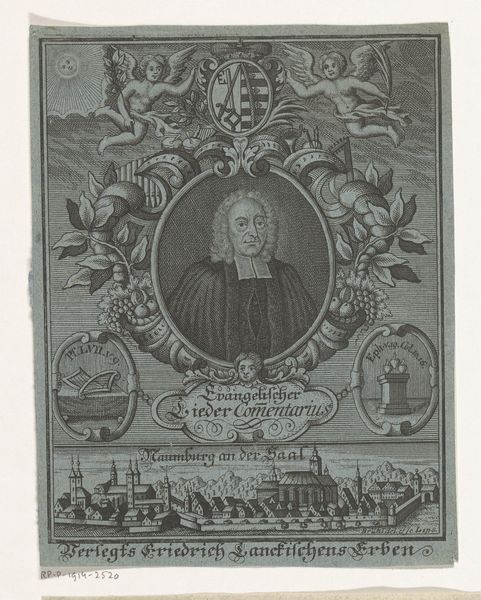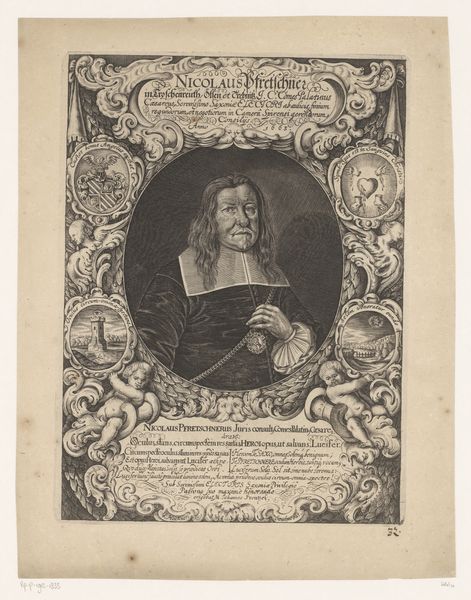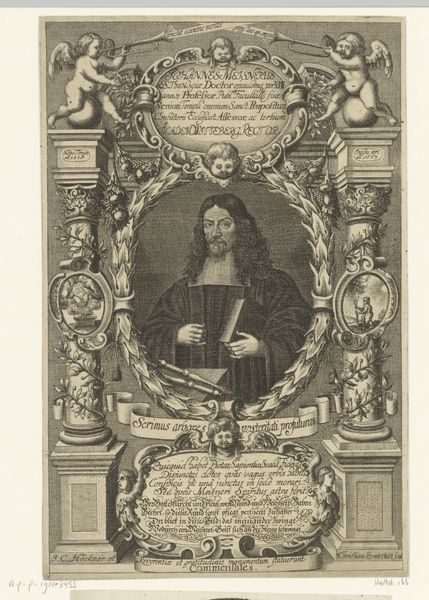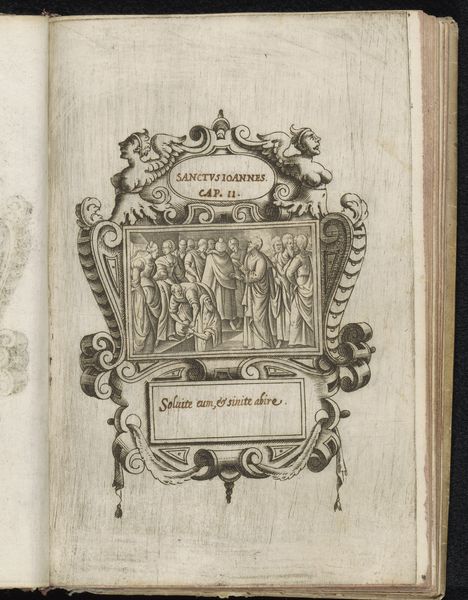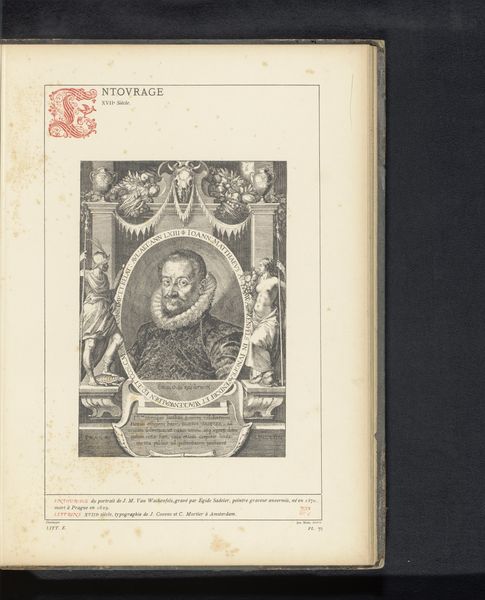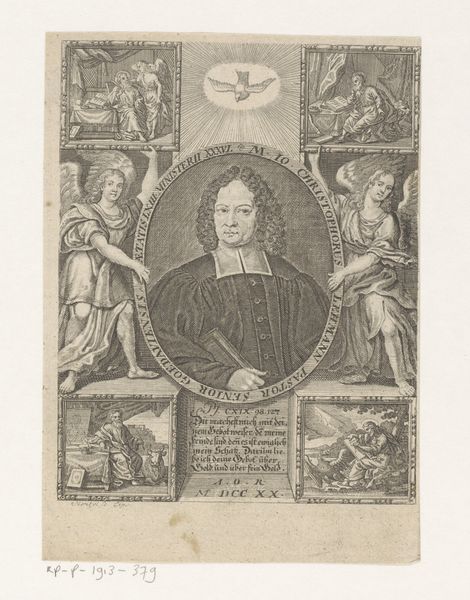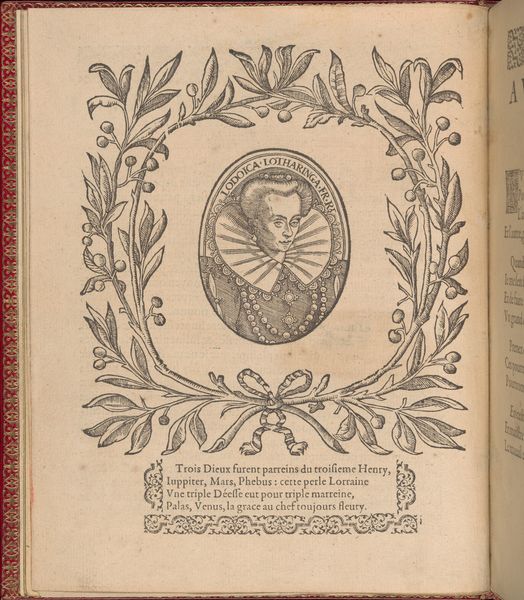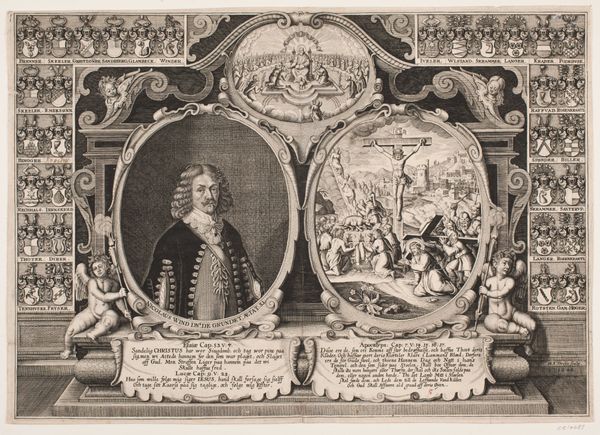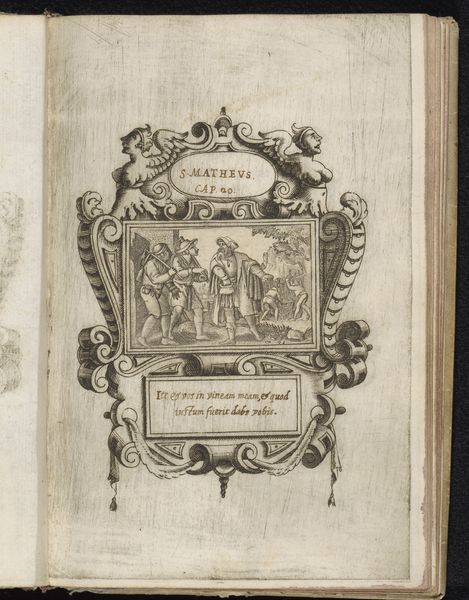
'Primera parte del arte de escribir todas formas de letras' 1650
0:00
0:00
drawing, print, engraving
#
portrait
#
drawing
#
baroque
# print
#
history-painting
#
academic-art
#
engraving
Dimensions: Overall: 12 3/16 x 8 11/16 x 9/16 in. (31 x 22 x 1.4 cm)
Copyright: Public Domain
Editor: So, this engraving, "Primera parte del arte de escribir todas formas de letras," from 1650, by José de Casanova... it's a bit overwhelming at first glance, almost like an official portrait but with so much symbolism packed in. The frame is overflowing. How do you even begin to unpack a work like this? Curator: You're right, it's dense! Given its purpose, the *art of writing*, we need to consider the social function of literacy in 17th century Spain. Who had access to these skills, and what power did it grant them? It's not just about beautiful letters. Editor: Right, it's access to information and privilege. Are the surrounding figures and symbols communicating something about who *should* have that power? Curator: Precisely. Look at the putti – classically rendered as angels but here engaged in study. They visually connect knowledge to the divine. The idealized figures flanking the central portrait, combined with that crest above, suggests an affiliation with nobility or a social hierarchy. Editor: And the phrase "Labore et Constantia" below - labor and constancy, which sounds almost like a justification for that hierarchy? Curator: A potent concept at the time! It underscores the perceived value of disciplined work ethic as a source of societal strength – in this case, associated with learning and upholding social order. Notice the sun symbol and how it may represent the king. This could indicate this text may have been commissioned for educational reform or, conversely, used to instruct a select group for their social class. How does this change how we understand this as more than just a guide on calligraphy? Editor: I see, it’s less about personal expression and more about societal roles and power structures. A seemingly innocent instruction book can hold so much loaded messaging. Thanks, this changed the way I see early academic and instructional material! Curator: Exactly! Thinking about how the social context and politics are interwoven with its presentation is vital. These seemingly insignificant symbols tell us everything about the text.
Comments
No comments
Be the first to comment and join the conversation on the ultimate creative platform.
